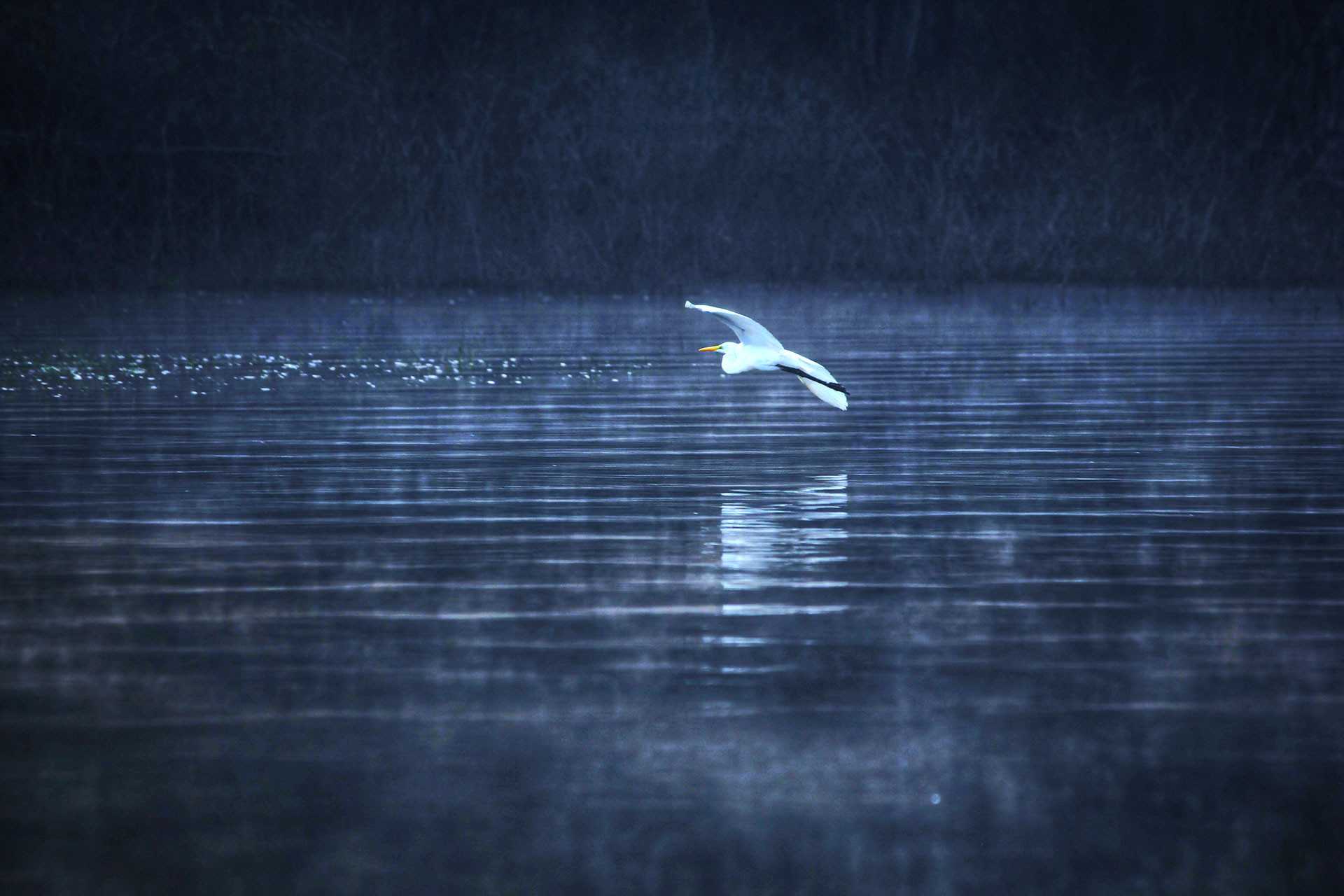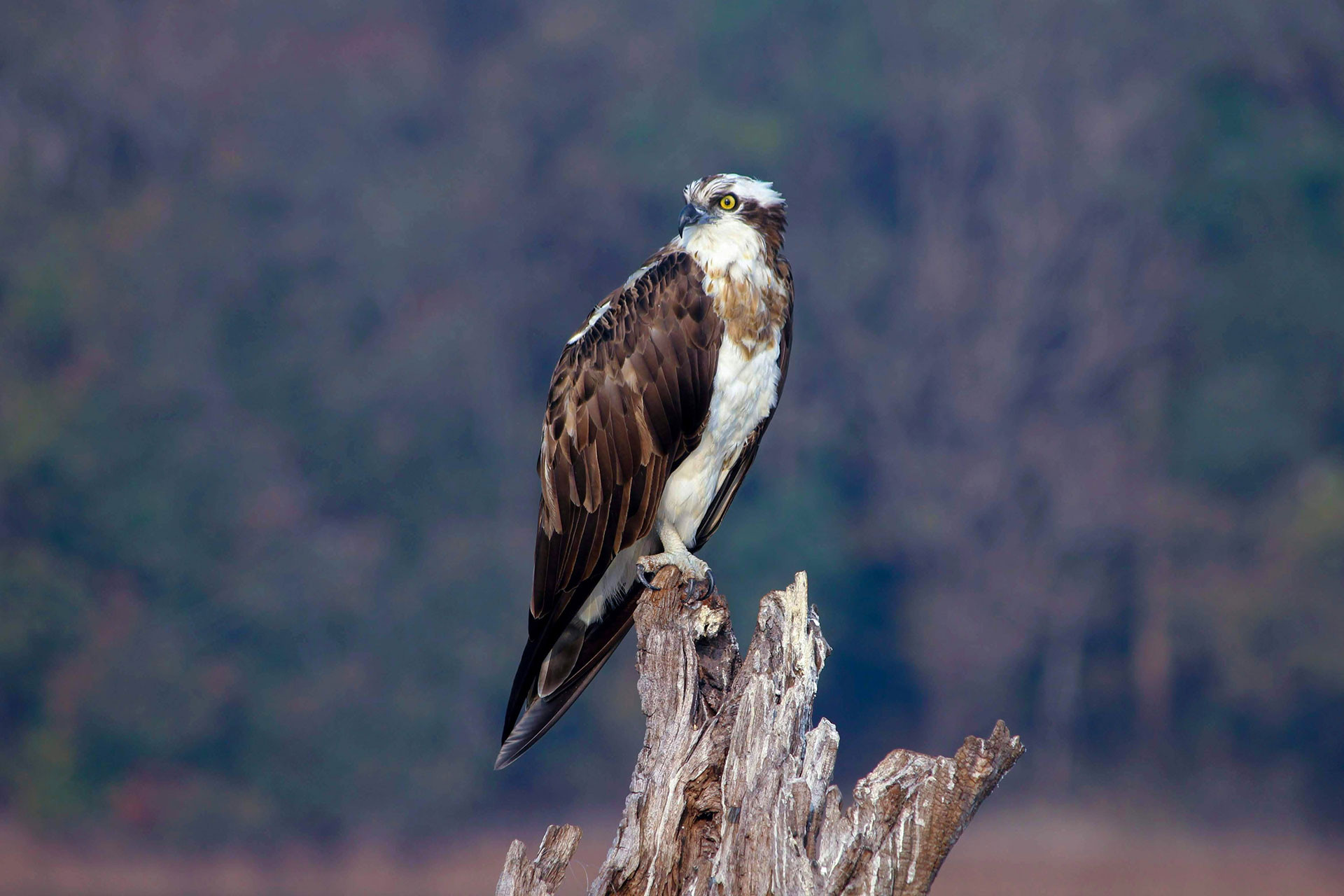Take me back to my boat on the river…
Time stands still as I gaze into her emerald waters…
Where many streams meet and mingle,
Where the sun plays his game of shadows, illuminating the mist of this enchanting jungle,
Where she reaches the depths of perfect stillness,
Where overhanging trees make for the greenest lushness,
Where I can disappear to be myself again, where there is no hurry, nothing to hold back,
Where the frown on my face disappears and a gentle calmness takes over,
Bhadra and the tiny boat on this river…”
Bhadra Tiger Reserve, to me, is a place where mythical beings wander amidst such natural beauty that it inspires my intense relationship with the jungle.
When staying at a Jungle Lodges & Resorts property, you are generally awake by 5:30AM, anticipating a knock on the door by the staff, reminding us that it is time to head out. That morning, I had chosen to take the boat safari on the Bhadra Reservoir. I was excited to spend a few hours at the reservoir, renowned for its magical ability to make islands disappear and re-appear at will. After a cup of hot coffee, I stood at the edge of the reservoir, waiting for my boat, breathing in the sleepy earth. I remember how that morning felt special, for then reasons unknown.
Winters in Bhadra Tiger Reserve are a sight to behold. Its inescapable, dense fog makes for an ethereal experience. Be it a jeep or a boat, you cannot help but lose yourself in Bhadra’s seduction.
At first, the loud, staccato notes of the engine revving jolted us out of our slumber. Eventually, as our ears got accustomed to the sound, it became one with the steady silence of the waters. Our naturalist was quick to point out a flock of Bar-headed Geese flying above. A lone Little Ringed Plover hurriedly ran along the water's edge, soon joined by a Common Sandpiper, leisurely in search for an early morning snack. A few egrets and cormorants sat nonchalantly on tree stumps jutting out of the water. A flock of Ashy Wood Swallows huddled to keep themselves warm. Then came the sunrise, turning the entire landscape golden, making life more spectacular than fiction.
A couple of Great Thick-knees moved slowly and deliberately on the rocks lining the reservoir banks; one seemed to be holding a tiny crab in its beak. As we cruised a little closer, a Red-wattled Lapwing that had stood motionless until then ran away, screaming an alarm, while the thick-knees took to the air, leaving us with the sound of their powerful wing-beats.
It was still early in the morning as we headed farther down the reservoir. Just then, we spotted a rock ahead, surprisingly clean, jutting out through the fog. I caught the naturalist and driver exchanging glances, and the boat was expertly steered towards it. As we cruised closer, the engines were turned off, and our naturalist asked us to spot the elephant, hinting that it was in plain view. Our hungry eyes scanned the area thoroughly, and just as we decided to give up, voila! The “rock” started to move!
That rock was, in fact, a mighty tusker floating in the cold water. After making a few positional changes, he swam across to the nearest bank. That is when we realised that the elephant had a broken tusk and seemed to have injured his spine, possibly from a fight with another elephant. Our naturalist conjectured that cold water may help manage the pain and avoid infections.
By then, the sun had come out, and so had the raptors. An Osprey was perched gracefully on a tree stub, basking in the warm sunshine. A couple of Grey-headed Fish Eagles had their eyes on us. Though we did not get to watch the famed aerodynamics of Ospreys fishing, we had an excellent time watching them go about their morning chores. They used to be winter migrants, but Bhadra now boasts a resident population of Ospreys. Bhadra is also a temporary home to the River Tern, a busy, bright, and stylish bird sporting what looks like the mask of Zorro. Though it wasn’t summer yet, which is when they gather to breed on the reservoir’s islands, we could still see a few terns flying around. Our naturalist called them “inspectors”, possibly here to inspect the grounds and pass on the message to flocks for the upcoming summer.
The sun was high in the sky, and it was time for us to head back. We saw an Indian Spotted Eagle soaring up in the sky while a noisy kingfisher lifted off with the familiar “chake-ake-ake-ake-ake” sound. A Lesser Adjutant Stork caught our eyes, actively scanning the area for prey.
A tree that was bare and leafless on our onward journey was now curiously filled in. Before I knew it, my heart started beating loudly—it was a flock of Malabar Pied Hornbills, and their numbers swelled by the minute.
Their funky headgear and dapper black-and-white plumage stood out against the empty branches. The loud, raucous cacophony of “kak-kaks” brought tremendous joy, for hornbills held a special place in my heart.
After mooring at the dock, I walked towards a sumptuous breakfast, still thinking about the flock and the “rock”.
River Tern Lodge is located 40km from Shimoga, Karnataka. Visit junglelodges.com for more details.








